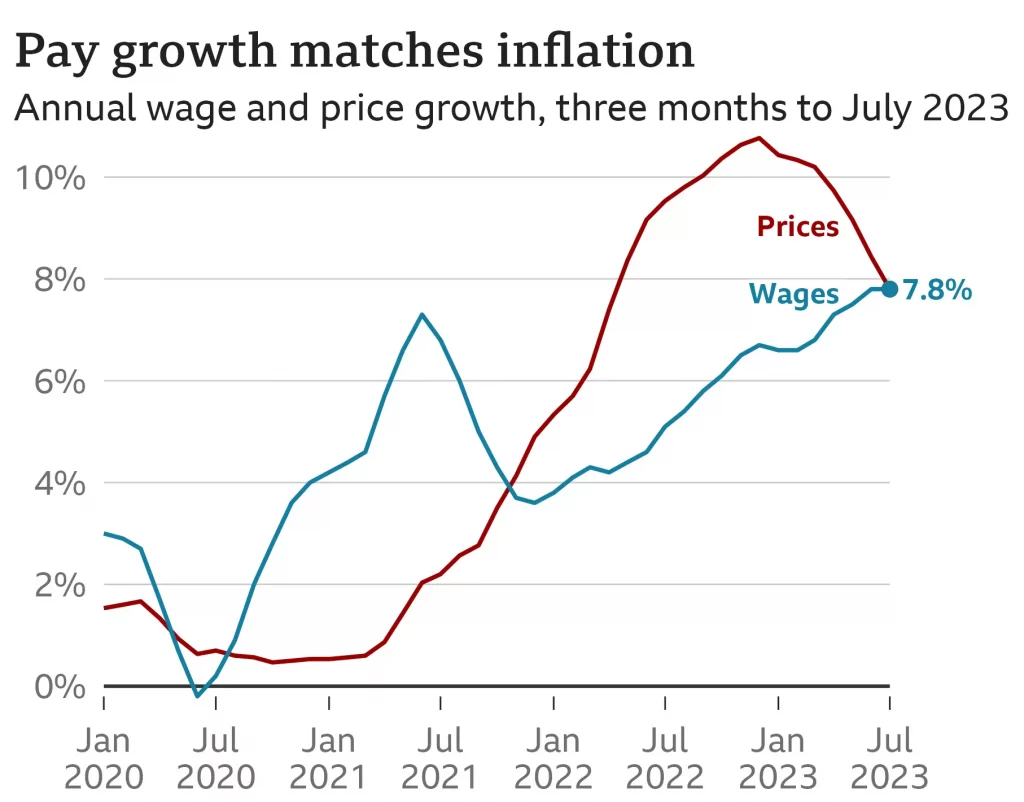By Tom Sharpe Finance Monthly September 12th, 2023
The latest employment data from the Office for National Statistics (ONS)
Main Points:
Wages, excluding the effects of bonuses, were up 7.8% compared to the same month a year ago matching inflation.
NHS and civil service one-off payments made in June and July 2023 affect the annual growth in employees’ average total pay (including bonuses) 8.5% in May to July 2023.
Finance and business services sector saw the largest annual regular growth rate at 9.5%, followed by the manufacturing sector at 8.1%.Unemployment and economic inactivity increases rose 0.5 percentage points higher than the previous quarter and 0.3 percentage points higher than before the coronavirus (COVID-19) pandemic.
Vacancies in June to August 2023 was 989,000, a decrease of 64,000 from March to May 2023. Estimates for August 2023 indicate that the number of payrolled employees rose by 1.5% (449,000 employees); the number of payrolled employees was up by 3.9% since February 2020, a rise of 1,120,000.
Sarah Breeden Executive Director at the BOE said "there is a risk that second-round effects in advanced economies mean that inflation is slow to return to central bank targets." Speaking to the House of Commons Treasury select committee, Breeden said "There are also risks relating to the global energy market, where further adverse supply shocks would push down on growth and up on inflation in most advanced economies, whilst providing support to
growth in net energy exporters, including some emerging economies.
Other risks include geopolitical tensions and the potential for the global economy to fragment. While there is evidence in some industries of decoupling, we are yet to see a substantial impact on global growth. Any significant fragmentation would represent a supply shock and be inflationary all else equal. "

Source: ONS












